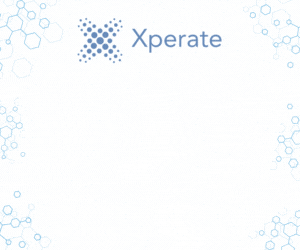sa.global: Power to reprocess
Many law firms had to adapt very quickly in early 2020, and Fieldfisher was no exception – ramping up very large-scale working from home, of course, streamlining collaboration and communications for those now working in even more dispersed teams, and tackling many a business process that may still have relied on people’s proximity.
Mike Giles, the firm’s finance director, says it has been particularly helpful to have the evergreen legal platform from sa.global sitting behind all this change – a switch the firm made back in 2017. “From the management point of view, it has been incredibly useful because I can get hold of important information much faster than used to be the case. That has also enabled us to push forward with key projects faster – projects which we would always have been dealing with at some point, but where the need for change had now suddenly accelerated with lockdown.”
The cloud-based system harnesses Microsoft Dynamics 365 capabilities, and that means that “imagination is almost the limiting factor – it can potentially do so much,” says Giles. “The question has always been, how much can we make work within the firm? Change is never the easiest thing to bring about in a law firm, and you need to wean people off some old ways of working gradually to achieve buy-in.”
But is this the moment for more significant transformation that a platform like evergreen could support – the so-called ‘burning platform’ moment from which there’s no return?The overarching aim of evergreen is to connect data across multiple business areas – financial, marketing, matter and talent management – for improved process and decision-making in the round. Giles is keen to explore plenty of the functionality, but says it’s financial process that is the game-changer in terms of his priorities in recent months.
“It does exactly what we need in terms of the core accounting. We’re moving toward the elimination of a lot of historic spreadsheets, a place that data would be dumped for reporting management information, with the aim of automating that reporting instead.” This could be especially beneficial at a time firms need to manage the business through so much macroeconomic uncertainty. “It takes our management reporting team away from number-crunching and allows them to spend more time on the analysis and interpretation of that data – and, of course, the more you look, the more you can find. Small, incremental changes aren’t necessarily visible to the lawyers immediately. But, as you become better at interpreting the data, you’re better able to highlight trends and opport-unities that were hard to see in the past.
“Of course, day-to-day visibility of activity is also incredibly important at the moment – monitoring to get early warning of any drop-off or pick-up in work areas if possible, as that is an early indicator of future billings and cashflow.” Fieldfisher was relieved to see less impact on activity levels than it had feared in March, Giles says, but is monitoring developments around the second wave of the virus to ensure the business is as prepared as it can be.
More generally, he adds, introducing workflow automation can increase process consistency across practices.
“During the lockdown period our people have had to work remotely, so old processes involving paper and wet signature approvals don’t work. Tasks have had to be redesigned and automated using the technology now available, which has undoubtedly been an efficiency gain for the firm going forward.
“We had been pushing to get rid of manual cheque-signing for years, and lockdown forced the change through. You could envisage a point where paper becomes almost entirely removed from the billing process as well, to the point where the bill is fully electronic.”
But more than ever, certainty over data and “one version of the truth” is required across systems to avoid confusion. “We’re trying to ensure that the data we all see is consistent – and if we have different views of data, to understand why they’re different or how they work together.“I’m always surprised by how difficult it can be to get an agreed headcount figure for a firm – you can approach it in several different ways, depending on exactly what it is that you want to count.” That’s an example of the sort of information he’s now looking to the evergreen platform to help reconcile.
Team tacticsAs well as trying to improve processes, the firm is looking to use technology to build out teams for client service delivery. When it was smaller, he says, it was easy to identify individuals with the skills for particular pieces of work, but as the firm grows it’s increasingly difficult to maintain that approach.
He explains: “A key priority for improved financial management and matter planning is the ability to tap into people’s skillsets without necessarily knowing the individuals all that well – pulling together an international team for a client, with a specific combination of languages and experience, for example.“You can search across people’s backgrounds and their current availability, and bring them together quickly.” That’s more an aspiration for the firm than a current reality, he admits. It will require more investment alongside sa.global on the HR side, with potential for creating new industry- or business-specific apps on top of the core suite.
hub to help fee earners to be as productive as possible with their day – a one-stop-shop concept where it’s possible to view relevant management data alongside the financial information that’s connected to a particular client.
“It could show the work ongoing, outstanding activity or bills, and perhaps pull in newsfeeds about a client or its sector using artificial intelligence,” he explains.
“It’s relevant information that you would otherwise need to search for – it’s immediately there, waiting – so partners are kept informed about their clients and matters.“You will be able to complete your time recording or work on documents through the hub – it just becomes the place you go to work.”
Update actionThe advantages of a cloud-hosted rather than on-premises system are well-known – resilience, flexibility and “almost infinitely scalable as well,” Giles says.
“One major change for us has been to a programme of much more regular software updates – there are about eight a year, which keeps things very current. As a law firm, of course, we’re more accustomed to having one upgrade every six months, if not annually.
“The product is updated very regularly, any security bugs are fixed, and we see a better version coming through every month.
“It’s very important to keep testing everything, however, and we’ve now introduced automatic testing – software to test the software – which is effectively building a workflow for testing.”
That means one further change Giles has needed to manage is the operational dynamic of his finance systems team, who are continuously monitoring and updating in the background as the firm follows its own path of continuous improvement. Other avenues he’s now exploring include options for tying in more aspects of HR management, and automating the consolidation of the accounts of the various Fieldfisher entities.
“That would take yet more time away from number-crunching exercises, and free the team to add even more strategic value in future,” he says.
This article has been taken from Briefing November 2020: Alert to change



